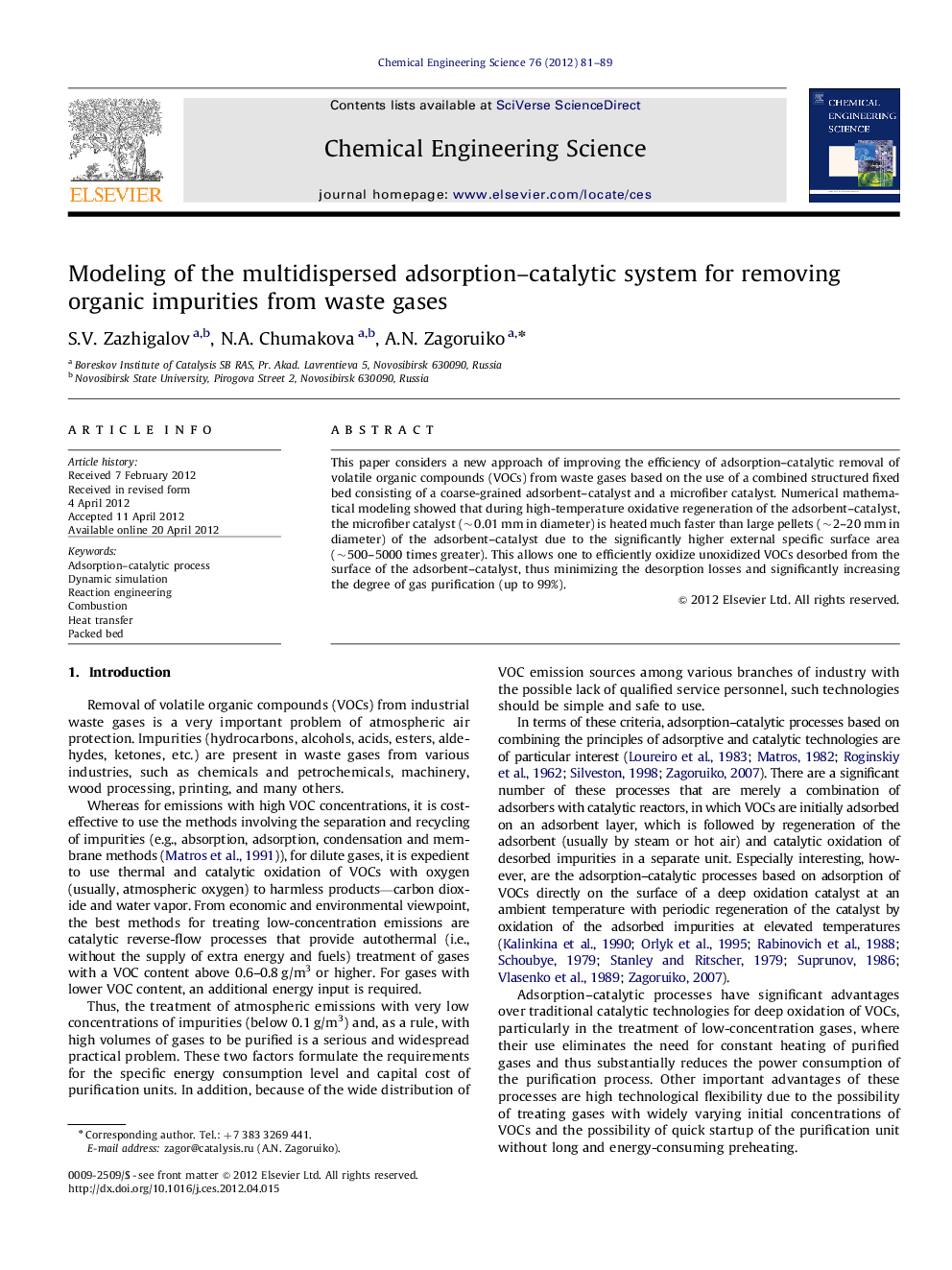| Article ID | Journal | Published Year | Pages | File Type |
|---|---|---|---|---|
| 155797 | Chemical Engineering Science | 2012 | 9 Pages |
This paper considers a new approach of improving the efficiency of adsorption–catalytic removal of volatile organic compounds (VOCs) from waste gases based on the use of a combined structured fixed bed consisting of a coarse-grained adsorbent–catalyst and a microfiber catalyst. Numerical mathematical modeling showed that during high-temperature oxidative regeneration of the adsorbent–catalyst, the microfiber catalyst (∼0.01 mm in diameter) is heated much faster than large pellets (∼2–20 mm in diameter) of the adsorbent–catalyst due to the significantly higher external specific surface area (∼500–5000 times greater). This allows one to efficiently oxidize unoxidized VOCs desorbed from the surface of the adsorbent–catalyst, thus minimizing the desorption losses and significantly increasing the degree of gas purification (up to 99%).
► Adsorption–catalytic process for VOC abatement in lean waste gases is considered. ► Packed bed of catalyst–sorbent macro-pellets and catalyst micro-fibers is simulated. ► Application of such bed allows improving process abatement and energy efficiency.
